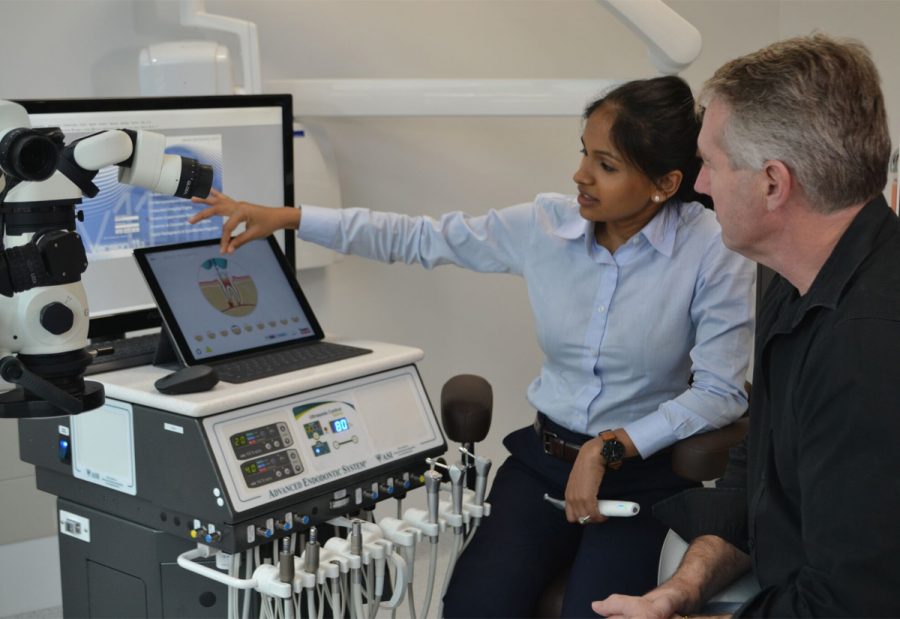Root Canal Retreatment
There are cases where a tooth that received root canal treatment may fail to heal or pain may continue to exist. The failure can occur months or years after the initial treatment.
Reasons Why Treatment May Fail
- Curved or narrow canals that were not treated during the initial treatment.
- Complicated canals that went undetected during the initial treatment.
- The crown or restoration was not placed within the appropriate amount of time following the procedure.
- The crown or restoration that did not prevent saliva from contaminating the inside of the tooth.
- New decay can expose a root canal filling material, causing infection.
- A cracked or loose filling or crown can expose the tooth to new infection.
Our endontist has undergone specialist training, so you can rest assured that you will get the best possible results from root canal retreatment.
Once retreatment has been selected as a solution, we will reopen your tooth to gain access to the root canal filling material. This restorative material will be removed to allow access to the root canal. Dr Yoganathan will now clean your canals and carefully examine the inside of the problematic tooth. Once cleaned, the canals will be filled and sealed and a temporary filling placed in the tooth.
At this point, you will need to return to your dentist as soon as possible in order to have a new crown or restoration placed on the tooth to restore full functionality.
Provided you have returned to your dentist in good time, you should now have a healthy, pain free tooth that will last you for many years to come and as it is still your natural tooth, you will have no additional maintenance of this tooth, other than keeping it clean.

Cracked teeth demonstrate many types of symptoms, including pain when chewing, temperature sensitivities, or even the release of biting pressure.
Injuries to the mouth may cause teeth to be pushed or dislodged from their sockets. We may need to reposition and stabilise your tooth.
With regenerative endodontics, we revive or regenerate the tooth’s natural tissue so the root can continue growing, be functional and last you for your lifetime.
Internal bleaching, also referred to as walking bleach, is a technique that is used to whiten the appearance of teeth. Internal bleaching is conducted under the direction of a dentist.
Root end sugery or apicoectomy is the most common surgery used to save damaged teeth. Occasionally, root canal therapy will not be sufficient to heal the tooth and your endodontist will recommend surgery.
Root canal therapy is a conservative procedure undertaken by an endodontist to save teeth. It is a commonly performed dental treatment and has documented success rates of over 90%.
